Tuscany is the dream location in Italy, with its gently rolling hills, cypress trees, every jaw-droppingly beautiful village, it seems, offering a quiet church with renaissance frescoes. But Tuscany is bigger than Wales and includes many different types of landscapes and cities. Read our guide to the 10 provinces of Tuscany.
If Tuscany is a “regione”, and Montepulciano is a “comune”, what are the “provincia” of Tuscany? And what areas do they cover?
Find out more by downloading our full guide to buying property in Italy.
As you search for property in Tuscany, you can sometimes find that a village or countryside property is listed under the name of the province (provincia in Italian). It may even refer to a geographical area, such as a valley or riviera. Once you know what province a property is in, you can also research the area by looking up the tourism website for that province.
What are the Provinces?
Tuscany is divided into ten provinces: Florence, Arezzo, Grosseto, Livorno, Lucca, Massa Carrara, Pisa, Pistoia, Prato and Siena. These are named after the main town of each province. They are the second level of institutional bodies, between a municipality (comune) and a region (regione). Often it is in the capital city of the province that you will find the biggest hospitals (Ospedale) and the police head quarters (Questura).
What are Municipalities?
Towns within a province each cover an area around them. This is the municipality, and local administration is carried out by the “Comune” (plural: comuni). The address of a property will often state the names of the municipality, province and region. However, sometimes a two-letter abbreviation is used for the province eg. Lucca [LU], and a numerical postcode (Codice postale) for the municipality eg. Barga 55051.
Tuscany has 287 municipalities, each with their own identity, developed from centuries of tradition, agricultural practices, historic architecture and cultural events. Each municipality is headed by a mayor (sindaco or sindaca) assisted by the communal council and committee.
Each province can also have its own characteristics, often influenced by the geographical area and history. Here we look at each of the ten provinces in Tuscany.
Province of Lucca
Lucca province has a coastline on the Ligurian Sea and offers a diverse landscape, from beaches to mountains. The area has good train links to Pisa and the airport. A train journey from Lucca to Pisa airport takes just 43 minutes and costs €8.60. You can also take the train to Florence in around 1hr 20mins for €7.90.
FIND your dream home in Tuscany here.
The city of Lucca is of great historical interest, with its thick stone walls circling the historic centre. As you step through one of the six gateways you discover bell towers, churches and renaissance palaces. Life revolves around the Piazza dell’Anfiteatro, built on the ruins of an ancient Roman amphitheatre.
An area becoming popular for village properties, at affordable prices, is the “Middle Valley of the Serchio”( La media valle del Serchio). Lying just north of Lucca, the area stretches up to Garfagnana and across to the Pistoiese mountains. Lovely villages here include Barga, Coreglia Antelminelli, Bagni di Lucca and Borgo a Mozzano.
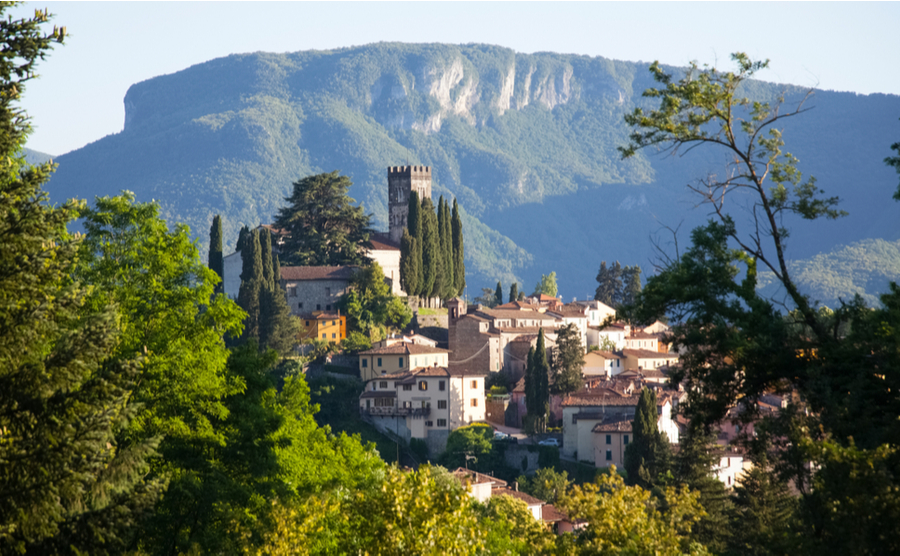
Barga, one of the “most beautiful villages in Italy”
Also, not to be missed is the coastal area of Versilia. From Seravezza and Stazzema down to Viareggio and Torre del Lago Puccini on the coast. Here you will find sandy beaches and many cultural events.
Village houses can start at less than €90,000 and detached countryside homes from €220,000. If you want to be in the heart of Lucca expect to pay over €220,000 for an apartment, with the most luxurious ones in Palazzo houses, with frescoed ceilings and roof top views, costing in the region of €650,000. Start your property hunt in Lucca on our Italy Property Search pages.
Province of Massa-Carrara
Massa Carrara province is located in north-west Tuscany above Lucca. It looks out onto the Ligurian sea, and borders the regions of Liguria and Emilia-Romagna. This province has the lowest population of all the Tuscan provinces.
There are two geographical areas. Firstly, the coastal plains of the Apuan Riviera, where the towns of Massa and Carrra are located. Then there are the hills and mountains, which cover most of the province, and incorporate the Apuan Alps. Here you will wonder in amazement at the white marble basins, loved by Michelangelo.
At the border with Liguria and Emilia-Romagna, alongside the Magna river, is an area known as Lunigiana with its historic villages, full of tradition, good food and culture.
An example of a village with good amenities and a lovely historic centre and nearby castle, is Fivizzano. Located in the Tuscan-Emilian Apennine National Park this is a wonderful area for trekking and mountain biking.
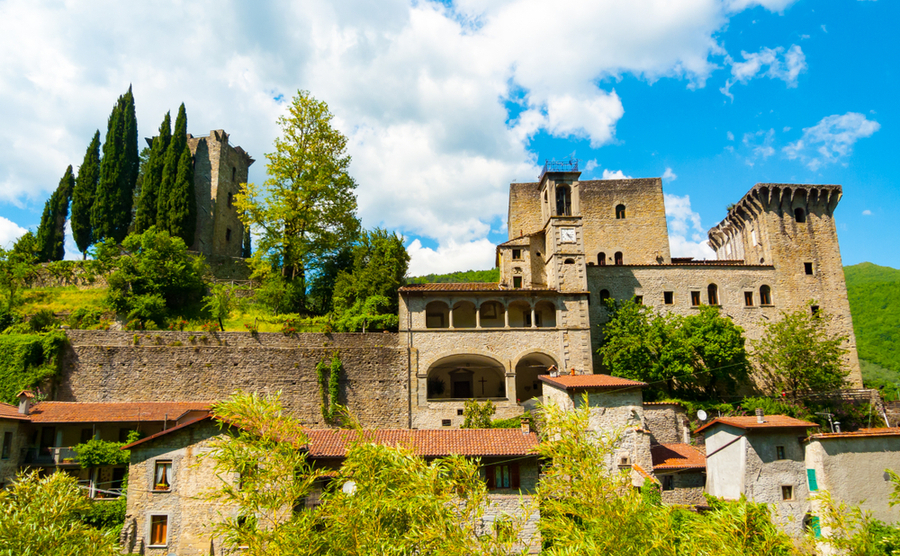
Castello della Verrucola in Fivizzano, Massa e Carrara, Tuscany
Properties around Fivizzano are very well priced too. It’s possible to buy a house for as little as €120,000. You can buy your dream, stone farmhouse, with pool and views for less than €800,000.
Want a holiday home but worried about the cost? Why not pool finances and buy with family? Explore our guide, Buying Abroad with Family.
Province of Pistoia
The province of Pistoia is north of the central point between Lucca and Florence. Lucca province is to the west and the Emilia-Romagna region to the north. The main city of Pistoia is located in the south east in an area called Piana dell’Ombrone. The city is similar in style to Florence, with an impressive tower, Duomo, Baptistery, terracotta roofs and large piazzas.
The south west area is called Valdinievole, which is a valley in the Arno river basin. This agricultural area is well known for it’s Pescia flower nurseries, especially carnations. Tourism is mostly centred around the spa town of Montecatini Terme, which was awarded Unesco world heritage status in 2021. It is also conveniently located near the Lucca to Florence road. Agliano is another small town along this route, which is just 45 minutes drive from Florence.
Province of Prato
The city of Prato is the third most populated town in central Italy, with about 180,000 inhabitants. Yet, the province is the second smallest in Italy. It was once part of the province of Florence, but in 1992 it became it’s own province. It borders Florence in the south and the city of Bologna in the Emilia-Romagna region to the north. You can train or drive from Prato to Florence in less than 30 minutes.
Prato may have built it’s prosperity on textiles, but it is also a great destination for holidays and entertainment. The city combines a charming historic centre with modern business and art districts. Attractions in the area include fine churches, museums and the Emperor’s Castle. The castle is a superb example of Swabian architecture built in 1200. Classical music concerts take place regularly at the Politeama Theatre, and there are outdoor music events across the summer.
For those who love walking, a trail between Prato and Bologna will take you past rivers, abbeys, chestnut groves, and meadows with cows and wild horses.
2 bedroom apartments in Prato can cost from €135,000. Town houses start at around €340,000. In the hills you can find stone houses and villas with views of the city. Property for sale in Prato can be found on our Prato Property search page.
Province of Pisa
The province of Pisa is the second most populous province of Tuscany, with a total population of 421,642. There are 37 comuni within the province, which stretches from the plains of the Arno river across to the Ligurian sea. It borders with the provinces of Lucca, Florence, Siena, Grosseto and Livorno. Making it a great base for visiting the beautiful cities and villages of Tuscany.
Transport links are excellent around Pisa. There are 23 airlines flying to 73 destinations including London, Bristol, Manchester and Dublin. The airport is so close to the city, you can walk to nearby B&Bs in 10 minutes. You can even catch a local bus to the leaning tower, which takes about 17 minutes, or stroll across the town.
Currently, you can find flights from London to Pisa airport for as little as £8. In about an hour you can drive, train or coach to Florence. 30mins to Lucca, and 20 minutes to the sea.
Although Pisa is on flat land, as you go further south in the province you will discover more hills, forests and typical Tuscan villages. Heading north of the province you can see part of the Apennine mountain range.
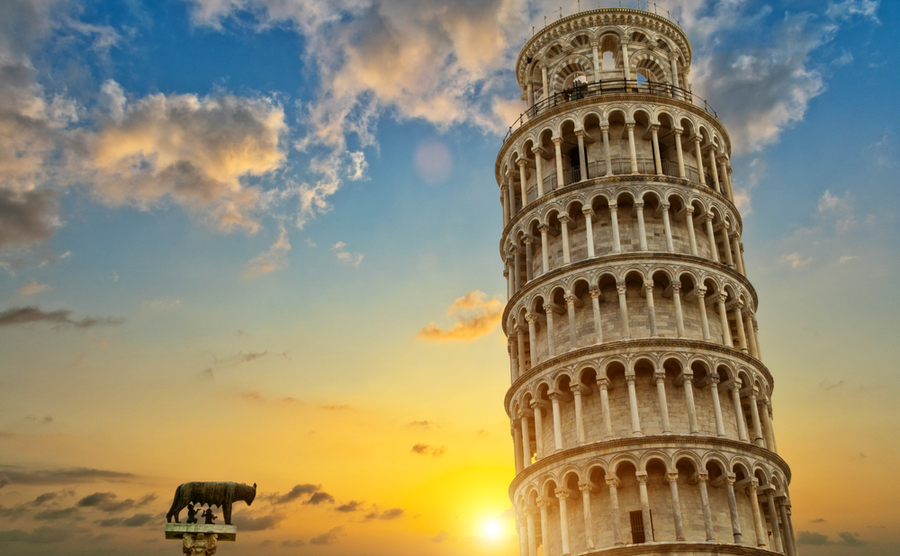
Beyond the cliche, it’s easy to forget how beautiful Pisa is
The province of Pisa has many historic towns and villages to explore. Such as the walled town of Volterra with its frescoed palaces, duomo, and archaeological museum. Nearby you can visit a Roman theatre and remains of an Etruscan acropolis.
In the countryside around Volterra you can find beautiful stone houses for sale. There are so many beautiful villages within Pisa province with properties to suit every budget. From village apartments for €50,000, up to luxury farm houses valued over a million.
Get a free, no-obligation quote from Smart Currency Exchange today.
Province of Florence
The province of Florence covers a large part of the north east of Tuscany. The city of Florence being the capital of both the region of Tuscany and the province of Florence. However, since 2015 the province has been renamed the Metropolitan City of Florence.
Over the years the city has spread along the plains either side of the Arne river, to cover a large area. But it is the historic parts of Florence that remain top of many travellers must see list. It is an amazing outdoor museum, that well deserves it’s Unesco World Heritage status. There is so much to see, within a short walk. Such as the Duomo, the baptistery and Ponte Vecchio.
The rest of the province is much less developed, especially in the mountainous areas. However, there are three areas that do attract tourists. These are Mugello, Empolese Valdelsa and Chianti.
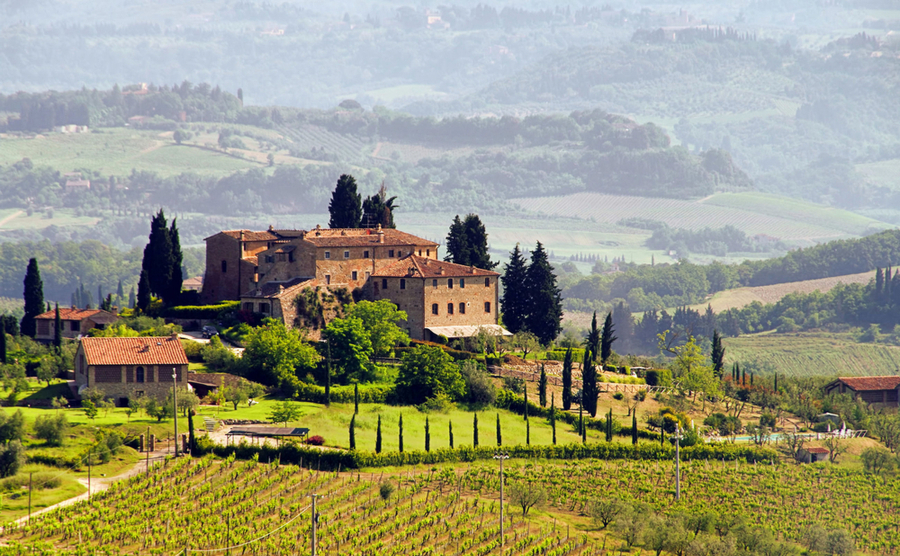
Chianti, Tuscany
Mugello is the area north of Florence that looks like a wide green valley crossed by the Sieve river. A beautiful landscape where you can enjoy nature. Then there is Empolese Valdelsa which is along the Arno and the Elsa river, a few kilometres from Florence. Finally, between Florence, Siena and Arezzo lies Chianti. A succession of hills, villages and farm houses that entice visitors to explore this beautiful countryside and enjoy its food and wine.
A small apartment in Florence can cost from €155,000, although a spacious apartment near the Duomo can cost around €400,000. A prestigious apartment within a Palazzo with roof top views across the city can sell for over a million. In the Chianti hills you can find stone houses to suit most budgets.
Make sure to download your Emigration Guide today.
Province of Livorno
The province of Livorno runs along the central section of the Tuscan coast. It also includes the Tuscan Archipelago, including the islands of Elba and Capraia. The coastline is known as the Etruscan coast (Costa degli Etruschi).
Tourism is centred around the port of Livorno and the other coastal towns. However, it is the inland villages that offer the bargain house prices. For example, the hill top village of Sasseta, in the Val di Cornia. Here you will find winding streets with great views, in an area famous for it’s red marble and thermal waters. If you want an island getaway, escape to Marciana on the island of Elba, with it’s crystal clean waters, lush vegetation and fortress, which hosts concerts and cultural events.
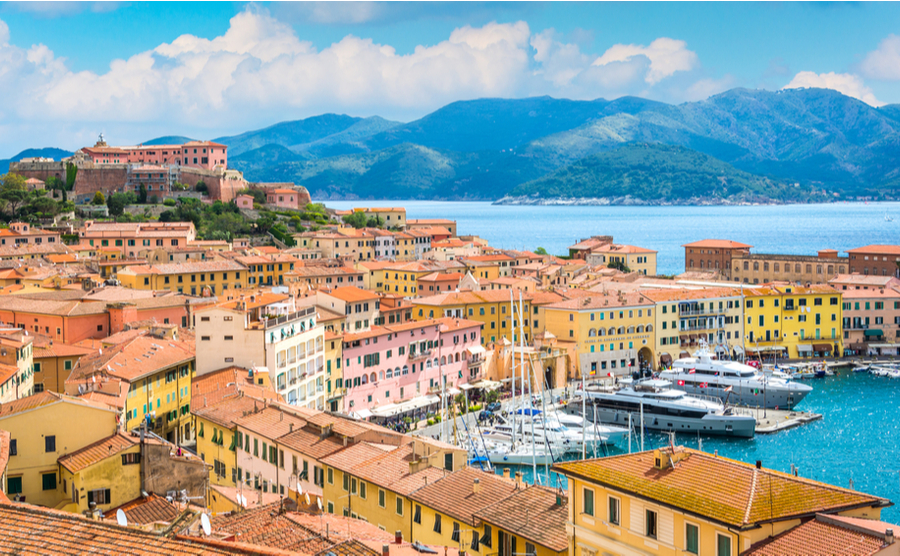
Portoferraio in Elba Island, Tuscany
There are some reasonably priced properties in Livorno province, especially if you venture inland. It’s possible to find apartments in Sassetta for less than €100,000. Even on Elba you can find apartments for €150,000. Plus, the town of Livorno is only a 25 minute drive from Pisa airport.
Province of Arezzo
The fourth largest province of Tuscany is Arezzo. It is located on the east side of the region, to the right of Florence, and north-east of the province of Siena. It also borders with the regions of Emilia-Romagna, Marche, and Umbria.
Despite its central Italy location, it is just a 2 hour drive to the Adriatic coast. The city of Arezzo is 1hr 11mins drive to both Siena and Perugia and less than an hour to Florence. The nearest airports are at Florence and Perugia.
It is a fabulous area to look for that dream stone house in the hills. The area around Cortona is particularly popular, as the small town of Cortona is so charming. Its typically medieval architecture, consists of ancient palazzos, narrow cobbled streets, small artisan shops and classic Tuscan trattorias.
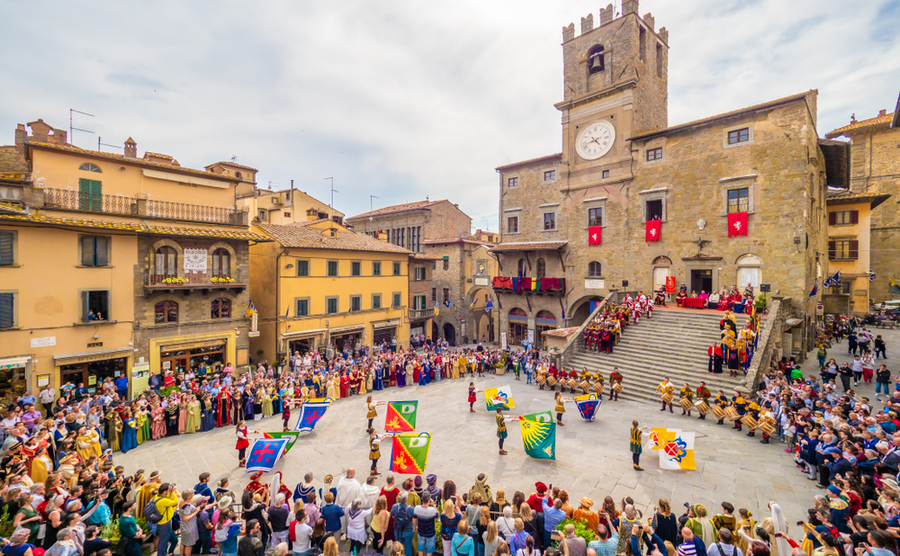
Cortona, Arezzo (ValerioMei / Shutterstock.com)
The city of Arezzo is situated between the valleys of Valtiberina, Casentino, Valdarno and Valdichiana. It was once a strategic Roman centre, that included an Amphitheatre, whose remains can still be seen today. The centre of Arezzo is home to magnificent monuments, churches, palaces and museums. In Piazza Grande there is an annual Knights tournament and a monthly antiques market.
It is possible to find apartments for under €160,000, and there are plenty of farm houses waiting to be renovated. €490,000 could buy you a stone house near Cortona, that is ready to move in. There are many examples to see on our Arezzo Property Search page.
Province of Siena
The province of Siena is south of Florence and is south-west of the province of Arezzo. There are many geographical areas within the province that you may hear mentioned. Such as, Val di Merse in the south west; Crete Senesi on the south-east of the city, which includes Asciano; and Val d’Orcia, which extends from the hills south of Siena to Monte Amiata.
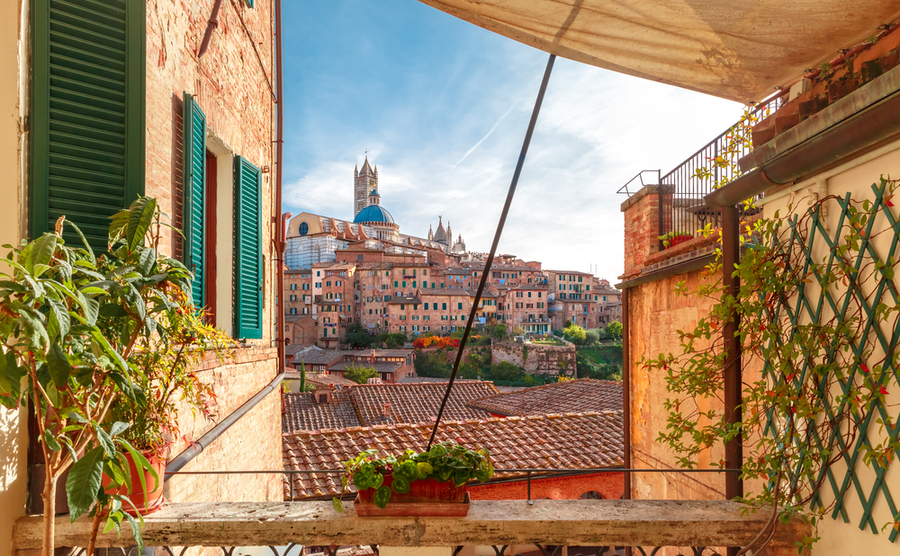
The Dome and campanile of Siena Cathedral in autumn
Some of Tuscany’s most beautiful areas are around Siena, and the Province boasts four UNESCO World Heritage sites. Firstly, there are the historic centres of Siena, San Gimignano and Pienza. In addition, the entire Val d’Orcia is listed as an area of great landscape importance. It’s rolling hills look as if they are straight out of a renaissance painting.
The nearest airports to Siena are Florence, Perugia and Pisa, depending what part of the province you are in. Internal flights make it possible to fly to Rome, then fly to Florence, then catch a train from Florence to Siena.
Popular places to buy property include, Montepulciano, Castiglione d’Oricia, Monticiano and Pienza. In the lesser known villages you can still buy apartments for less than €100,000. At the other end of the scale, €3,900,000 will buy you a large house with wine producing estate. There is a big selection of properties available to buy in the Siena province.
Get your free Italian Viewing Trip Guide today.
Province of Grosseto
The province of Grosseto is in the far south of the region of Tuscany. To the north-west is the province of Livorno and to the north-east is the province of Siena. Its coastline is on the Tyrrhenian sea and looks out to the southern islands of the Tuscan Archipelago, including the Isola del Giglio.
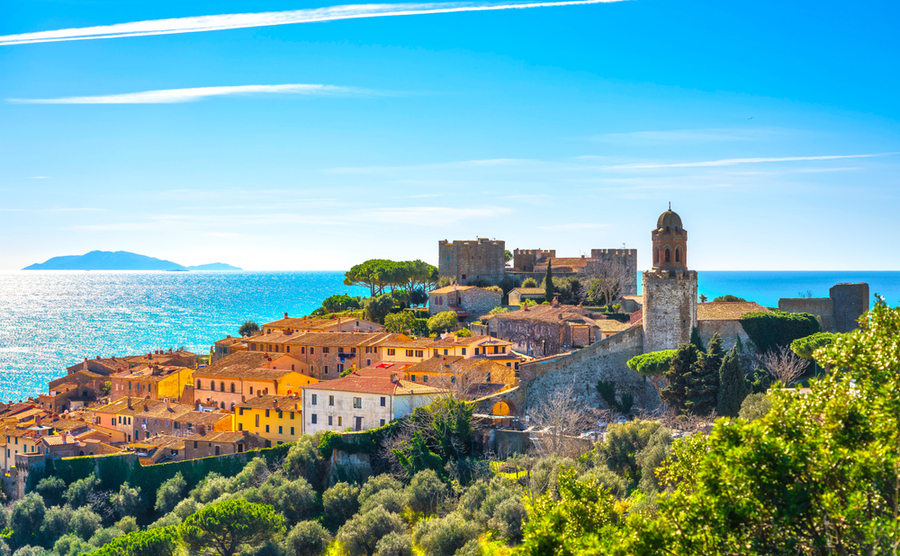
Castiglione della Pescaia, Maremma.
The province of Grosseto is mainly hilly, except for the coastal strip, known as the Maremma plain. The coastal areas can feature lakes, rivers, lagoons and marshes. The Nature Park of Maremma is a green oasis and nearby you can visit the ruins of the Etruscan city of Roselle.
The city of Grosseto is situated in the Ombrone plain and has a historic centre enclosed within huge hexagonal ramparts. The city is only a 20-minute drive to the sea, where you can combine holidays on the beach with trips into the countryside.
SEARCH for your Tuscan home here.
As suggested before in “7 seaside villages in Tuscany”, the seaside villages of Castiglione della Pescaia and Porto Santo Stefano are lovely coastal locations along the Grosseta coast. Property options around Grosseta include seaside villas, new build houses, farm houses and city apartments.
Which ever province you choose, you will find beautiful countryside, pretty villages, and the opportunity to live a healthy life style. In fact, I can think of 10 reasons why Tuscany is good for your health.











